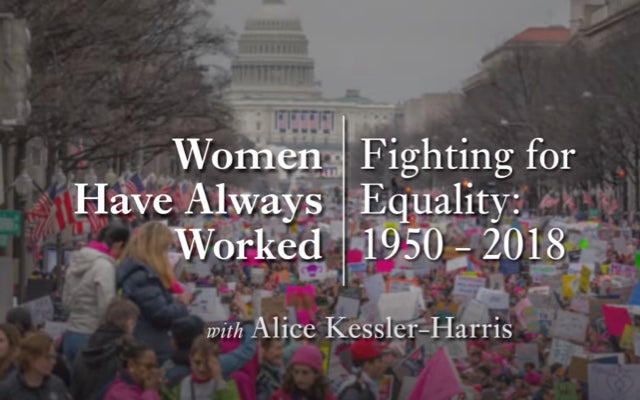
Women Have Always Worked, an edX Course Exploration, 91-98
Video Gallery
Women Have Always Worked: Fighting for Equality: 1950–2018.
An exploration from an online edX course.

The following are video previews from the edX course “Women Have Always Worked” presented by Alice Kessler-Harris and Columbia University.
Women Have Always Worked: Fighting for Equality: 1950–2018.
An exploration from an online edX course.
The Knights of Labor was the largest and most extensive association of workers in 19th century America. Organized in 1869, the movement grew slowly in the 1870s, then surged in the 1880s, reaching a peak membership approaching one million in 1886-1887 with Local Assemblies spread across the country in more than 5,600 cities and towns.
It shall be the Purpose of the Illinois Labor History Society to encourage the preservation and study of labor history materials of the Illinois Region, and to arouse public interest in the profound significance of the past to the present.
This encyclopedia appeared first as a published volume in 2004, but the published and electronic versions evolved together, part of an integrated vision of a new kind of historical encyclopedia. It includes thousands of entries, historical sources, and special features. One special feature, a map…
Women Have Always Worked: Fighting for Equality: 1950–2018.
An exploration from an online edX course.
In 2019, there were 25 major work stoppages involving 1,000 or more workers and lasting at least one shift, the U.S. Bureau of Labor Statistics reported today. Between 2010 and 2019 there were a total of 154 work stoppages, averaging 15 stoppages a year.
Mother Jones Museum is the website of the Mother Jones Heritage Project, a 501-c-3 non-profit. We are guided by the philosophy & model of Mother Jones, whose base was in Chicago, but who went across the US to organize and fight for justice.
If the 1960’s were known as the era of vigorous student militancy in most sectors of American education, the 1970’s may well go down in history as the decade of the angry teacher.
Women Have Always Worked: Fighting for Equality: 1950–2018.
An exploration from an online edX course.